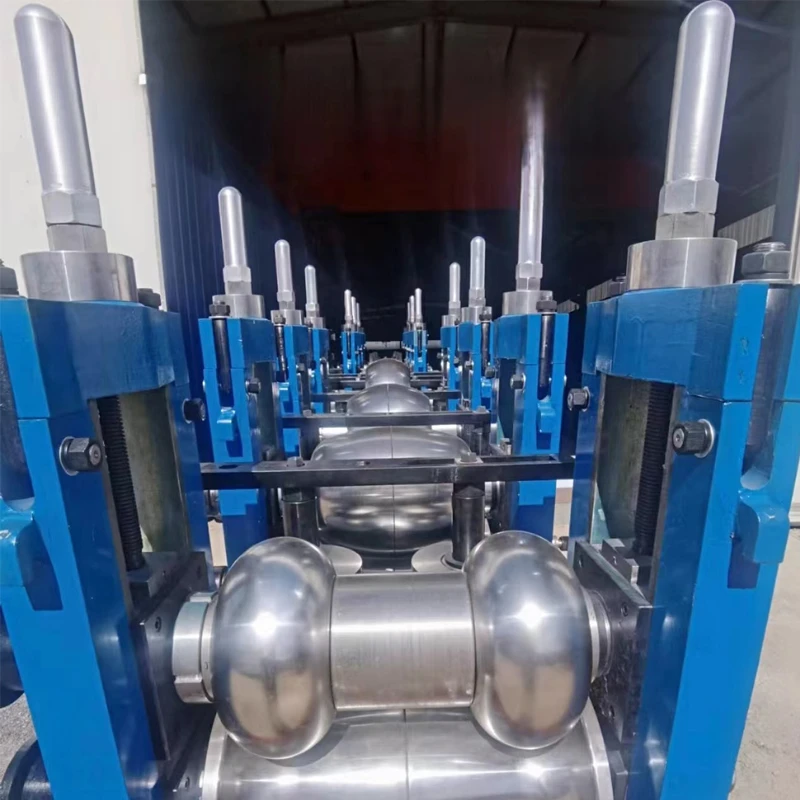shear baler
Understanding Shear Balers An Essential Tool in Recycling
In the world of recycling and waste management, shear balers play a crucial role in transforming scrap materials into manageable and transportable forms. As the demand for recycling increases due to environmental concerns and resource scarcity, understanding the function and importance of shear balers has become essential for businesses involved in material recovery.
What is a Shear Baler?
A shear baler is a heavy-duty machine designed to compress and shear scrap metals and other materials into compact bales. These bales are easier to handle, store, and transport, making them ideal for recycling facilities, scrap yards, and similar operations. The machine uses a combination of mechanical force to shear and hydraulic pressure to compress the materials, resulting in dense bales that can significantly reduce the volume of scrap.
How Does a Shear Baler Work?
The operation of a shear baler can be broken down into several key processes
1. Loading Scrap materials, such as metals, plastics, and cardboard, are loaded into the feed hopper of the baler.
2. Shearing The baler's shear mechanism uses sharp blades to cut through the materials. This is particularly effective for tough materials like steel and aluminum, ensuring they are adequately sized for compacting.
3. Compacting Once the materials are sheared, hydraulic cylinders push them into a compression chamber. Here, the materials are further compacted into dense bales.
4. Baling After compacting, the press solidifies the bales, which are then tied using wire or straps to maintain their shape during transportation and storage.
5. Discharge The completed bales are ejected from the machine, ready for collection or shipment.
Advantages of Using Shear Balers
shear baler

The use of shear balers offers several advantages for recycling operations
- Space Efficiency By compressing materials into bales, shear balers significantly reduce the volume of scrap, freeing up valuable space in recycling facilities.
- Improved Transport Baled materials are easier to load and transport, leading to lower transportation costs and higher efficiency in logistics.
- Enhanced Safety Properly processed and baled materials are safer to handle, reducing the risk of accidents in busy recycling environments.
- Resource Recovery By enabling the effective processing of various materials, shear balers help recover valuable resources, supporting sustainable recycling practices.
The Environmental Impact
In an era where sustainability is critical, shear balers contribute to reducing waste and promoting resource recovery. By facilitating the recycling of metals and other materials, they help keep landfills from overflowing and reduce the need for new raw materials. This process not only conserves energy but also decreases greenhouse gas emissions associated with manufacturing new products.
Choosing the Right Shear Baler
Investing in a shear baler requires careful consideration. Operators must evaluate the type of materials they will be processing, the volume of scrap generated, and the available space for the equipment. Different shear balers come with various features and capacities, and it is essential to select a machine that aligns with the specific needs of the operation.
Conclusion
Shear balers are invaluable tools in the recycling and waste management industry. Their ability to efficiently process, compact, and prepare scrap materials for resale or recycling plays a pivotal role in promoting sustainable practices. As the world increasingly prioritizes recycling and waste reduction, the use of shear balers will continue to gain importance, driving innovation and efficiency in the sector. Understanding their functionality and benefits is essential for any organization aiming to make a positive environmental impact.
-
High Frequency Straight Seam Welded Pipe Production Line-BzZhou Xinghua Machinery Equipment Manufacturing Co., LTD.|Precision Welding, High EfficiencyNewsJul.30,2025
-
High Frequency Straight Seam Welded Pipe Production Line|BzZhou Xinghua|Precision Welding&EfficiencyNewsJul.30,2025
-
High Frequency Straight Seam Welded Pipe Production Line - BzZhou Xinghua|Precision Engineering&EfficiencyNewsJul.30,2025
-
High-Frequency Straight Seam Welded Pipe Production Line-BzZhou Xinghua Machinery Equipment Manufacturing Co., LTD.NewsJul.30,2025
-
High-Frequency Straight Seam Welded Pipe Production Line-BzZhou Xinghua Machinery Equipment Manufacturing Co., LTD.|Precision Manufacturing, High EfficiencyNewsJul.30,2025
-
High Frequency Straight Seam Welded Pipe Production Line-BzZhou Xinghua Machinery Equipment Manufacturing Co., LTD.|Precision Steel Pipe Manufacturing&Industrial EfficiencyNewsJul.29,2025


